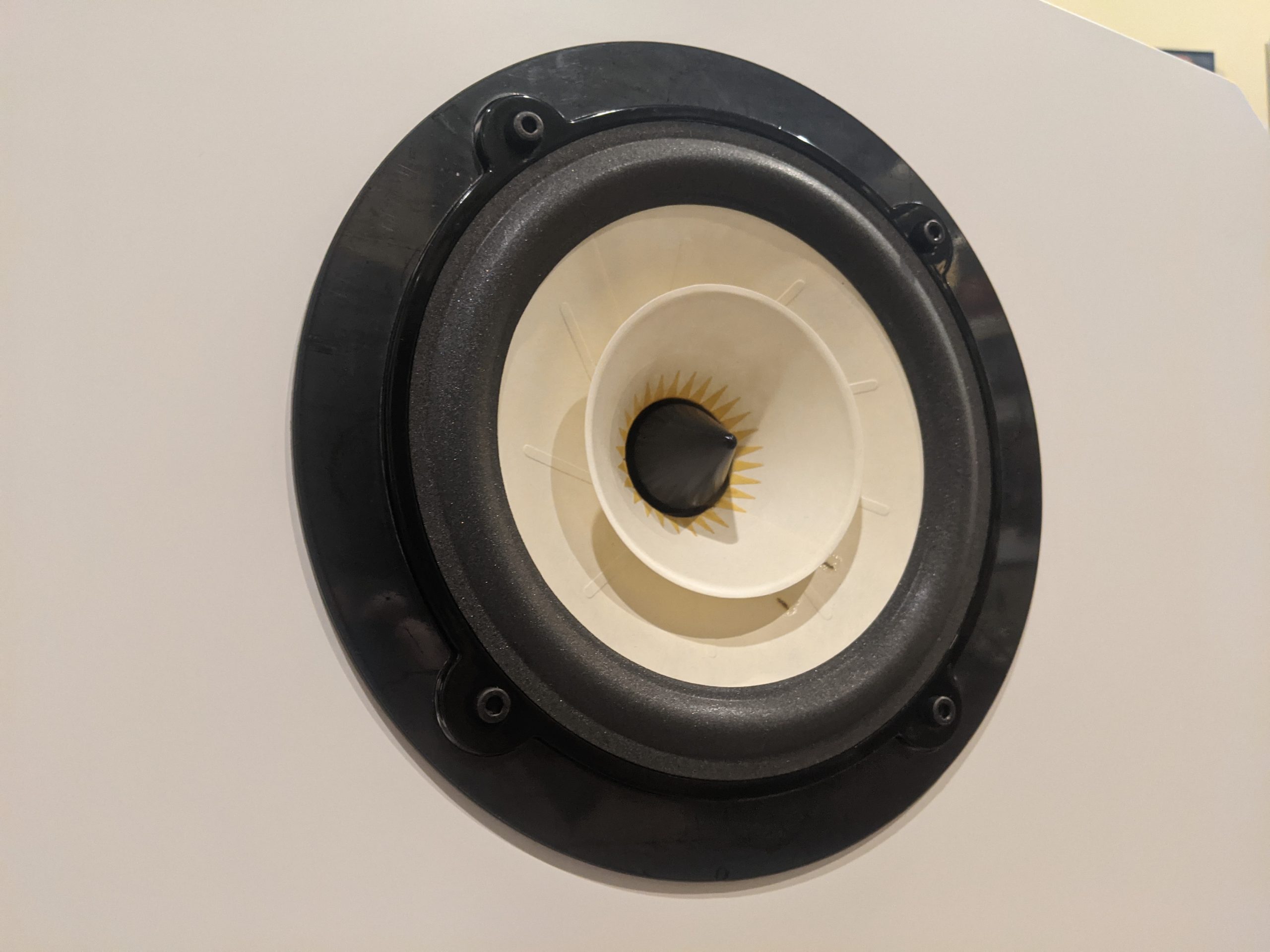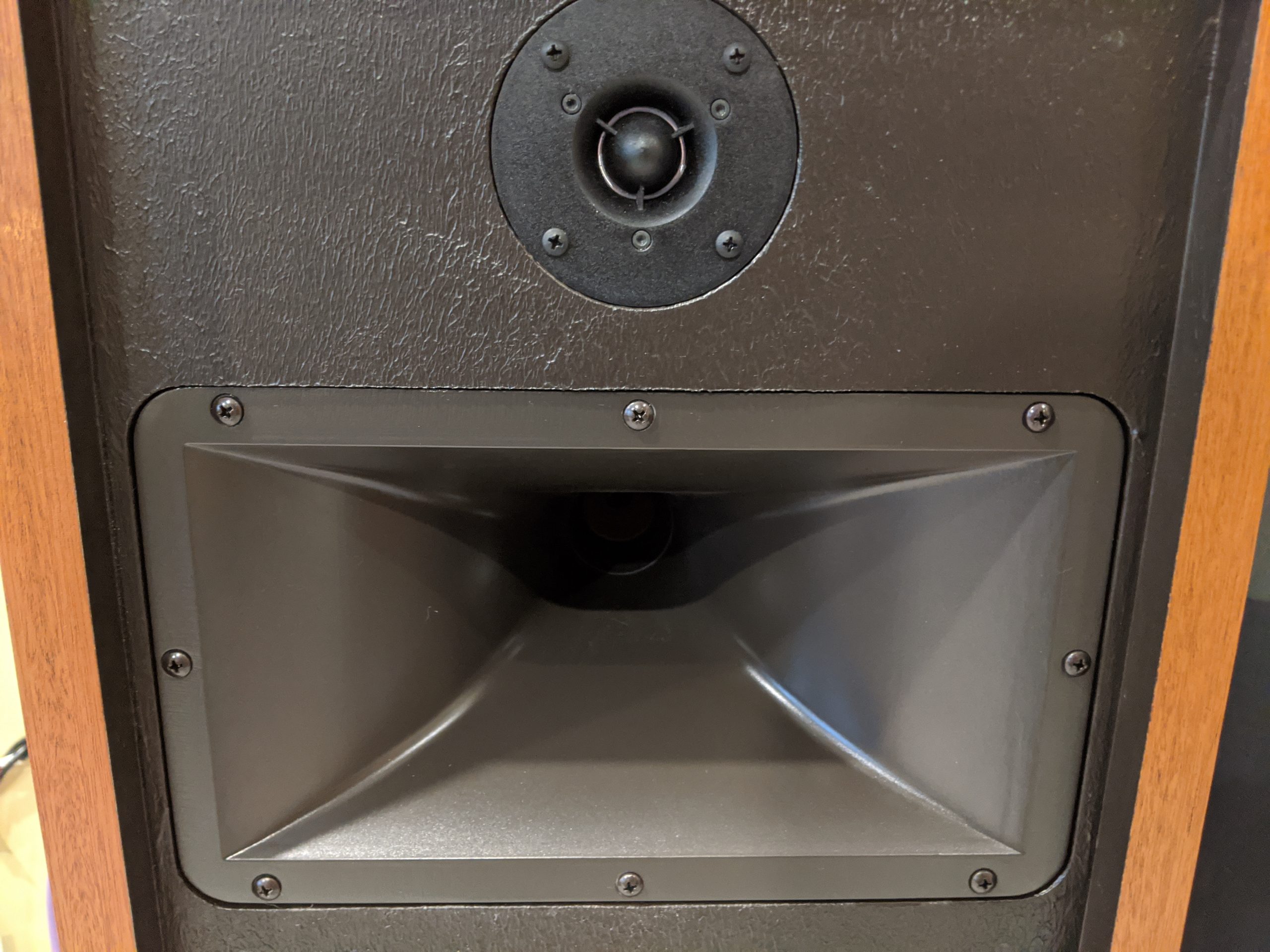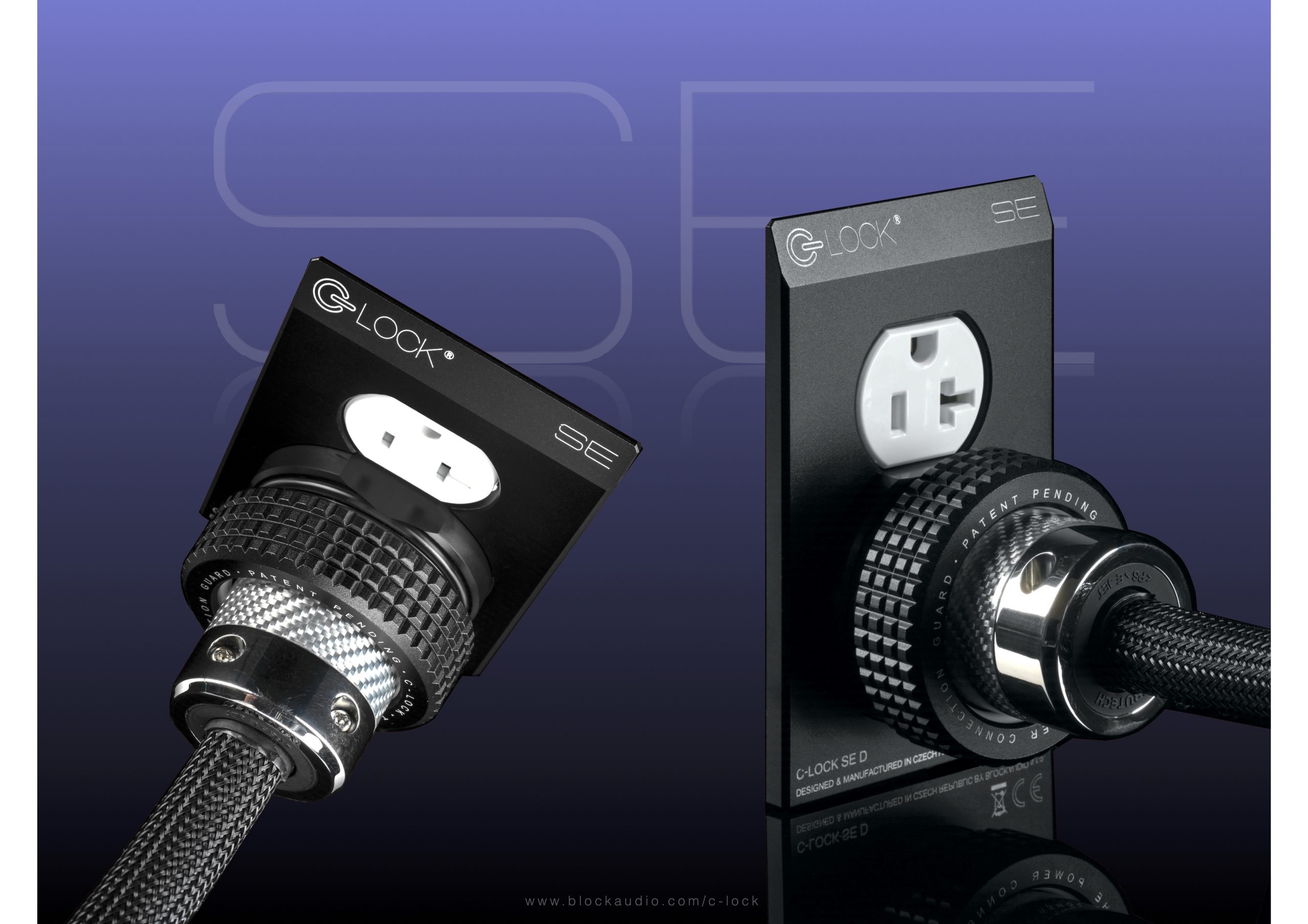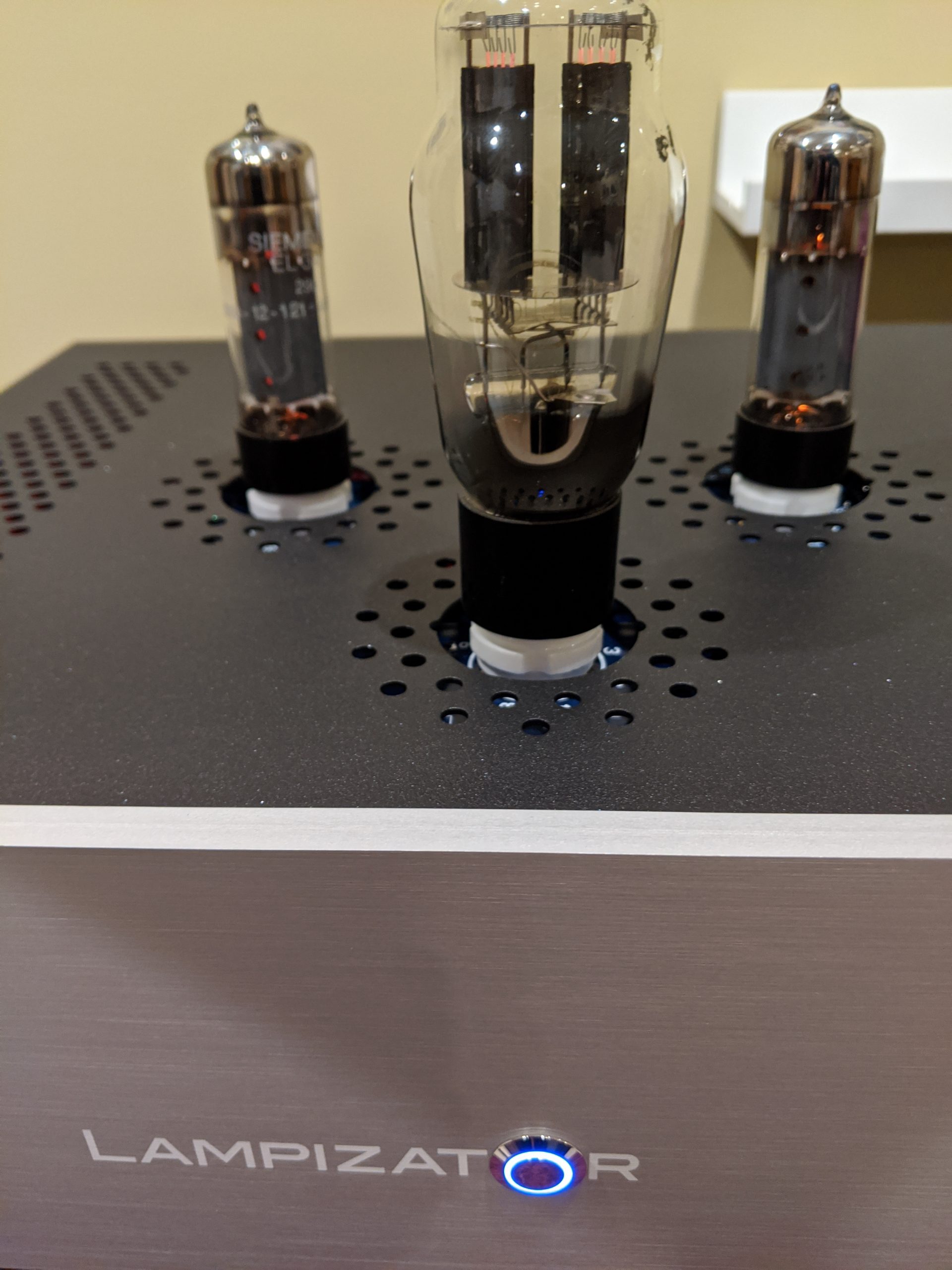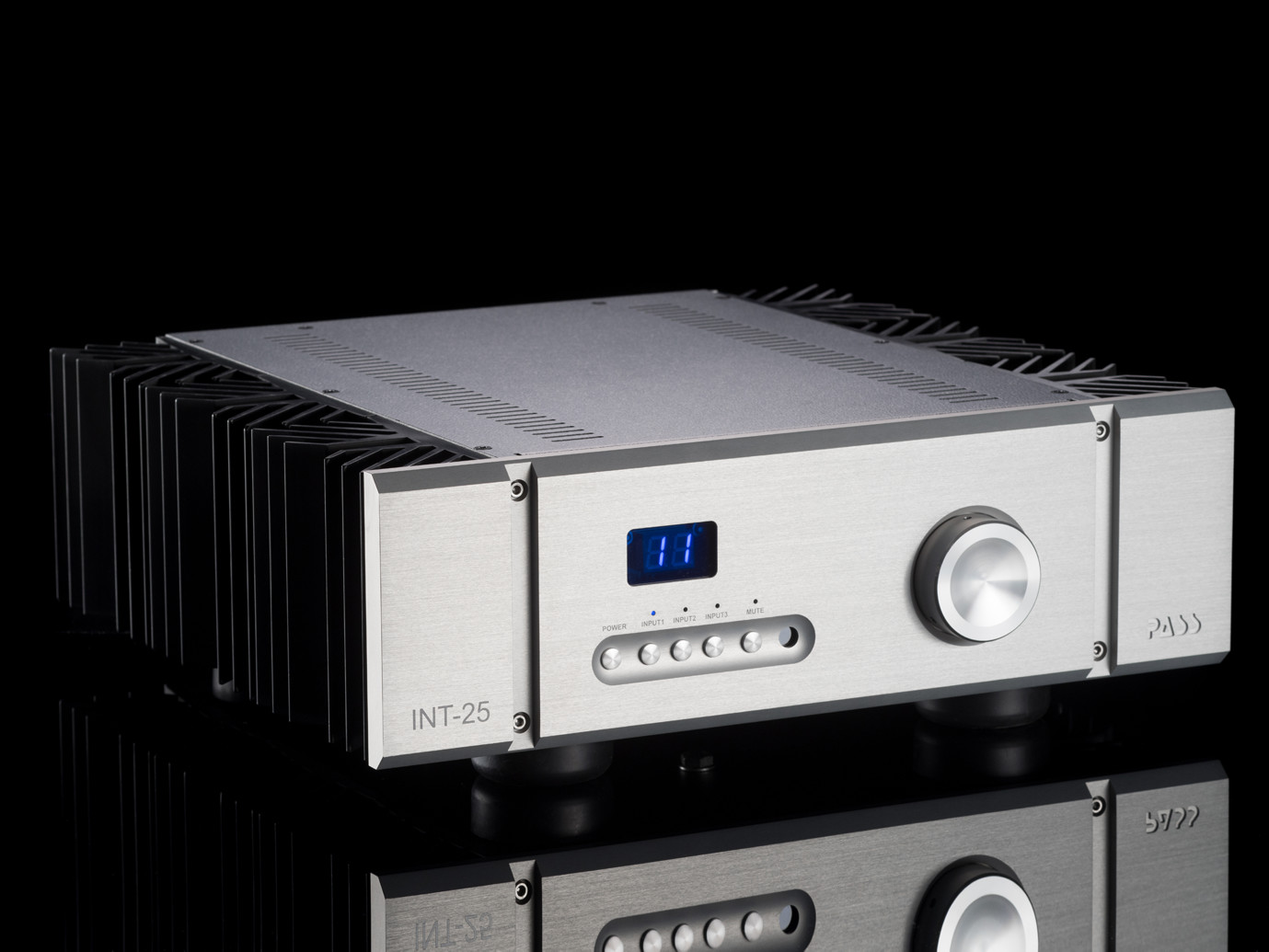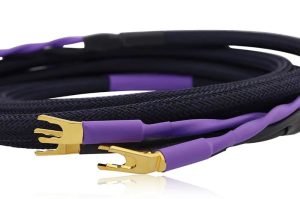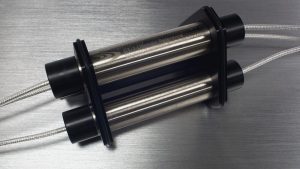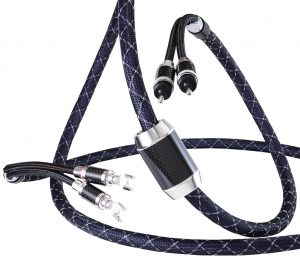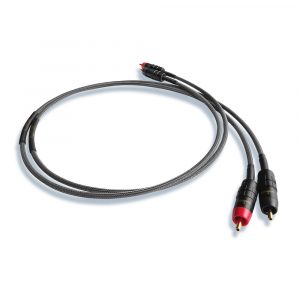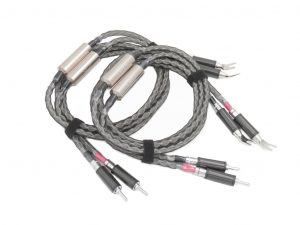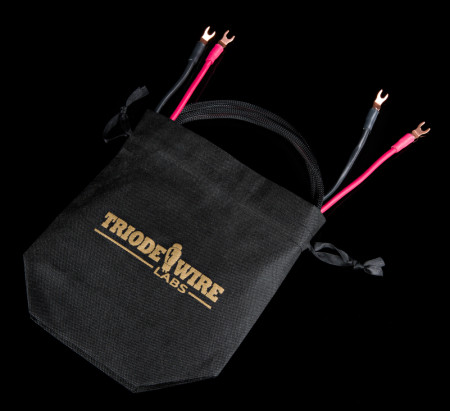
Triode Wire Labs' Cables Come to the Tune Saloon!
All right, you caught me. Triode Wire Labs is already a Star. Their products have been favorably reviewed by numerous respected audio publications, including several appearing in the cyber-pages of Positive Feedback. I never expected to write about them too, but it seemed that every time I attended an audio show, terrific sounding systems like Volti/Border Patrol, and Vinnie Rossi/Harbeth, were using Triode Wire Labs products. After AXPONA 2017, I simply surrendered to the inevitable and requested a complete cable "loom" to evaluate.
The cables I received for this review are as follows*:
- 1 Set 6-FT. Bi-wired American Speaker Cables with premium Cardas Connectors (Standard size CGMS Spades) - $1099 per pair
- 1 Pair Spirit 1 meter Single-Ended RCA Interconnects - $349 per pair
- 1 Pair Spirit 1-meter Single-Ended RCA Phono Interconnects – $399 per pair
- 1 Pair Spirit 1.5-meter Balanced XLR Interconnects - $549 per pair
- 1 Statement Series, 6 Ft. The Obsession NCF Power Cord (with Furutech NCF Connectors) - $1399 each
- 1 American Series, 5 Ft. High Power Digital American Power Cord (with leGo Furukawa connectors) - $699 each
Prior to shipment, all TWL cables are burned in on Alan Kafton's, audiodharma Hi Power 3.5 Anniversary Edition Cable Cooker. Even though crispy, I let the cables settle in for a few days before any serious listening took place.
(Note to digital cable users: While I did not request them for this review, TWL has been busy developing a complete line. Research, testing, and evaluation has taken three years to complete. The new line includes three types of USB cables; a 75 Ohm S/PDIF, a 110 Ohm AES-EBU, and custom Ethernet cables.)
Tech da Bag!
If you've paid attention to other TWL reviews, you know that Mr. Peter "Triode Pete" Grzybowski is a licensed Professional Engineer who cut his trade-teeth in the power generation industry. Pete is an adherent to the design philosophies of Western Electric, Bell Labs, and Altec; leveraging their exhaustive research with modern technology and materials, plus a twist of TWL secret sauce, to create reasonably priced, high-end audio cable designs.
A quote from Triode Labs website: "After finding the "best" materials for audiophile power cord, interconnect and speaker cable applications, Pete determined that the "best" assembly technique for AC power signals and AC transmission was to utilize Litzendraht braiding. This technique was developed in the 1930s in Germany. This type of wire construction offers very wide bandwidth with excellent phase performance, especially for audio signal transmission."
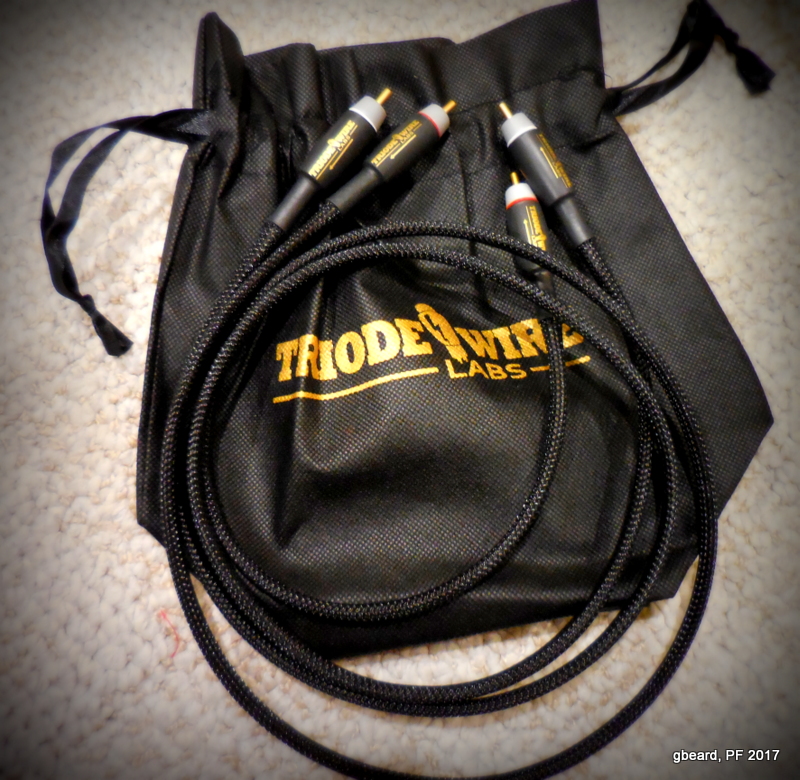
Each TWL cable set arrives in its own eco-friendly bag along with a personalized information sheet. My first thought as I unpacked them was how small and crazy-flexible the ICs are. Even the speaker and power cables are nimbly maneuvered behind my rat's nest of audio gear.
Cables, Science, and Subjectivity, Oh My!
There are electrical and mechanical properties that should, in theory, make some cables better than others at passing an electrical signal. It would be a fool's errand for me to argue the science of conductor engineering, and while fully trusting empirical evidence, my ears determine what sounds good to me. The challenge is describing the "sound" of cables without straying too far into the black-hole of audio hyperbole.
I will try, but perhaps fail. Spectacularly.
I began my evaluation by replacing all low-level signal cables; input, output, and speaker. Over a period of evenings, I listened carefully, trying to note changes from my own cables. While some differences were subtle, the Triode cables were more open and tonally fleshed out. The most obvious improvement was TWL's superior noise rejection, which resulted in terrific separation, added resolution and blackness between notes.
The signal cables are highly detailed throughout the entire frequency range. Bass performance is first-rate, with every sinewy note dense and distinct. TWL cables render high frequencies beautifully without a hint of stridency. If the Triodes have a musical sweet spot, it is the sweet spot; those middle octaves where audio-whackos like me believe the majority of music lives. And though frequency reproduction and detail are well presented; what these cables do best, in my opinion, is deliver the beautiful tone of each voice and instrument; all with a high degree of realism and naturalness.
If you've read anything I've written, you know I enjoy great imaging. The magic of chimes ringing bell-like from a distant corner of an orchestra. A Jazz trumpeter wailing no more than a Boodles & Tonic from my barstool. With the signal-level cables in place, images snap into focus. Instruments and voices are correctly sized, and players are localized in space. There is excellent depth, with layers upon layers of sound from front to back, and a wonderful bit of bloom toward the listener. The stage is very precise, and varies—sometimes strikingly so—with each recording.
One noteworthy listen was a spin of Larry Carlton and Steve Lukather's fabulous CD, No Substitutions: Live in Osaka. My system seemed to come alive with the duo shredding their guitars right in front of me; the sensation nearly as physical as if I was in the audience.
Attempting Specifics
Beyond the costly Deep Helium Cryogenic treatment that each cable is subjected to, there are some proprietary spices influencing Pete Grzybowski's design recipes. I don't know all the ingredients, but I'll share as much as I can. I'm paraphrasing some important details here, so for the full skinny on each cable, check out the Triode Wire Labs webpage: HERE
Signal Level Interconnects
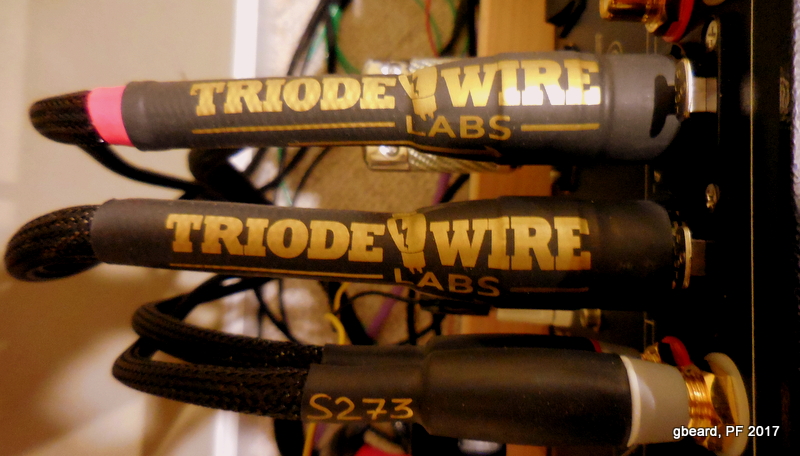
The Spirit Interconnects use a highly conductive hybrid material utilizing 7-nines copper (OHNO CCC), with a proprietary geometry that provides noise cancellation and EMI/RFI rejection. The single-ended cables use RCA connectors built with aircraft aluminum bodies, and equal, low-mass, and ultra-low capacitance center pin and ground. Both center pin and ground are high purity OFC copper with 24K gold flash plating, soldered with Cardas Quad-eutectic solder. The XLR connectors bodies are brass, with three equal, low-mass, and ultra-low capacitance positive and negative polarity pins, plus ground. All three pins are high purity OFC copper with 24K gold flash plating.
I slightly prefer the XLR interconnects over the RCA's, but that is likely due to the benefits associated with using the Pass INT-60 and PS Audio DirectStream Junior DAC's fully-differential balanced circuitry. Both types of interconnects were excellent in every respect.
Pete also sent me the Spirit Phono interconnect. Per the Triode website: "…New, shielded Spirit Phono interconnects, featuring state of the art conductive gold mylar as well as patented conductive carbonized external sleeving to assist in maintaining clean low voltage signals as well as providing interference & RF filtering without increasing capacitance like traditional shielding techniques!"
I used the phono IC between my turntable and phono stage. It is a terrific upgrade over my "normal" single-ended cables. There is no question that it gives a boost of resolution and frequency extension, and lowers the noise floor.
Loudspeaker Cables
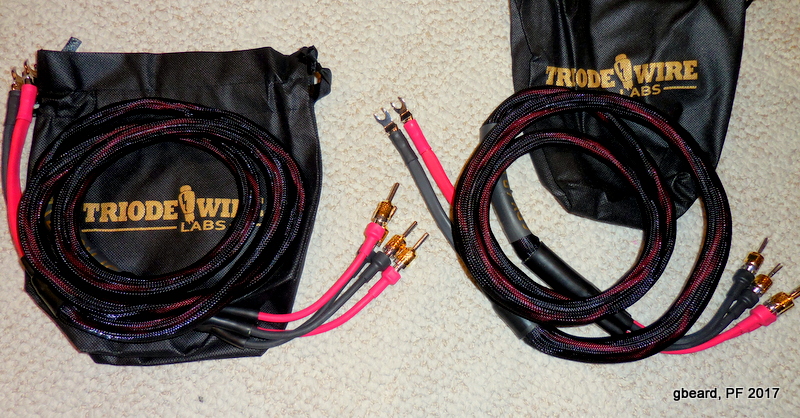
The TWL American Speaker Cable features 210 individual strands of 30 AWG conductors (doubled in Bi-wired configuration to 420 strands), and uses a proprietary "Ground Plane Technology" for passive noise reduction and EMI/RFI suppression. The set for review had optional Cardas CAB bananas at the speaker end (soldered with Cardas Quad-eutetic solder), and Cardas CGMS spades (pure copper with rhodium over silver flash coating) on the amp end. The spades are hydraulically cold-welded under 16,000 pounds of pressure to ensure the best connection. The standard 6.5 MM spades fit snugly—an exact fit—on the Pass INT-60 speaker terminals. (Other spades sizes available as an option.)
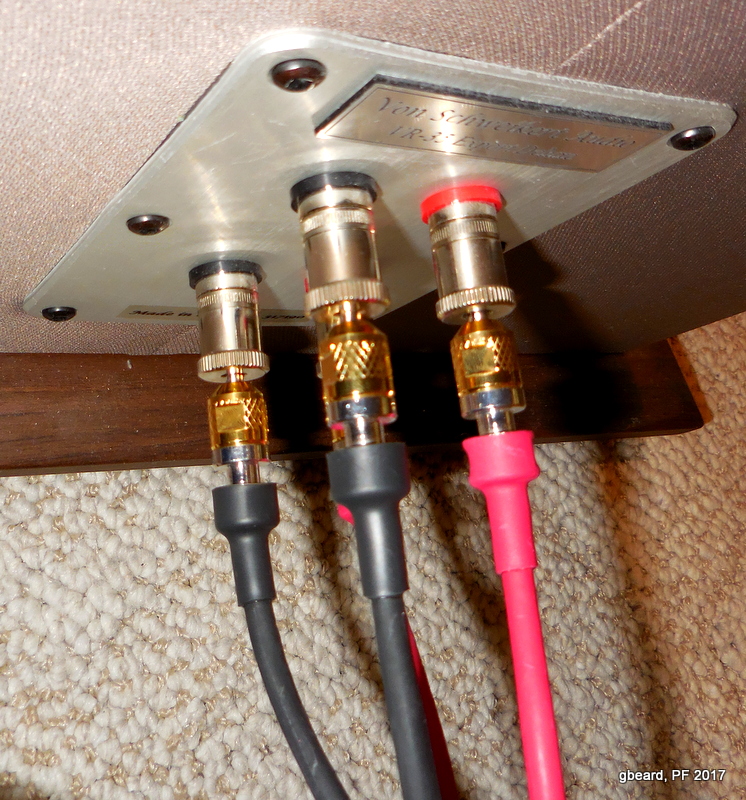
I found immediate improvement that I suspect is due, at least in part, to bi-wiring: My VSA's perform better with this wiring arrangement, providing a more dynamic and convincing presentation. The TWL Americans are fine speaker cables; beautifully made, and sound robust and rich, with truly excellent bass performance.
Power Cables
Pete sent me two power cords for this review. The High Power Digital American, which is terminated with IeGO Furukawa connectors that use custom CNC-machined Lightning carbon fiber fortheir outer connector bodies. And TWL's newest power cord, The Obsession NFC, featuring Furutech FI-50 NCF series connectors. (Shown below.)
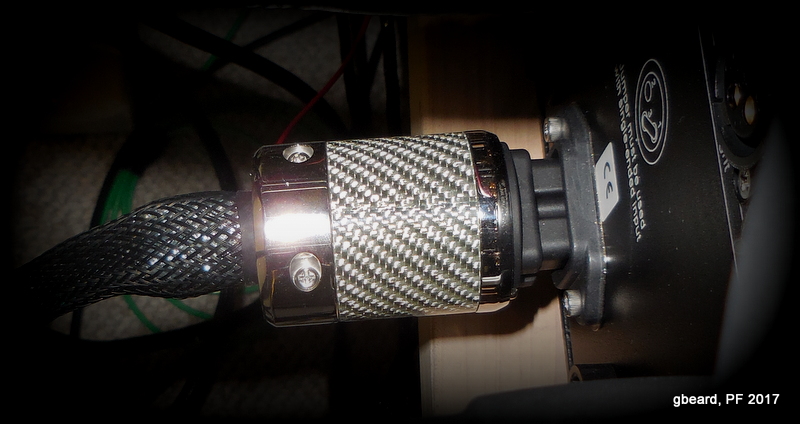
Whoa. Horse. Just whoa. These cords are dripping with spendy SOTA hardware!
The "High Power Digital American" is designed to be used, not just on digital gear, but on high wattage audio equipment, like amplifiers. Just as the regular version of the Digital American, it is also designed to lower the high frequency noise associated with digital and Class D audio gear. The leGo carbon fiber connector bodies' damp vibrations, and the conductive gold Mylar, as well as patented conductive carbonized external sleeving, helps maintain clean signals, providing interference and RF filtering.
The Obsession NFC is TWL's top-of-the-line power cord, and took Pete three years of R&D to complete the design. The Furutech connector bodies are non-magnetic, and isolate and dampen vibrations. This cord also uses patented external sleeving, but rather than gold, it uses silver Mylar to help achieve noise filtering.
For the purposes of this review, I used the Digital American on the PS Audio DirectStream Junior DAC, and The Obsession NFC to feed power to the Pass INT-60 Integrated Amplifier.
I Have the Power!
Yeah, I know…The power grid.
I clearly hear better sound late at night, when common sense tells me less power is being consumed, and (postulating) less noise is on the line. I also hear better dynamics when I plug my gear directly into the wall receptacles, bypassing power conditioning and surge arresters. But…The cheap-ass receptacle in the wall. The teeny-tiny Romex wires, and cut-rate plastic power IEC connectors in the components themselves…In light of all that, why should a power cord make such a difference?
One viewpoint I find interesting suggests we need to consider power cords as the first point of power entry, not the last point from thousands of feet of power transmission lines. I have no idea whether there is any solid practical evidence of these thoughts--they are probably as subjective as it gets.
Remember, fool's errand.
So, Triode Pete, what does your experience tell you?
The following is Pete Grzybowski's thoughtful response:
"Remember AC (Alternating Current) alternates, which moves current "back & forth" between hot & neutral conductors in the power cord. As you have iterated, the power cord is the first 6 feet to the hi-fi component, not the last 6 feet. If you suffer voltage fluctuations during the day, your system will sound better at night when the electrical loads are lower and voltage is stable.
However, many of the hi-fi components in a system are subject to noise & interference, specifically Electromagnetic Interference (EMI). The sad news is that many hi-fi components generate the noise (as well as the appliances in your home), which corrupts the electrical power delivery. Many components in your equipment, especially SMPS (Switching Mode Power Supplies) / FWBR (Full Wave Bridge Rectifiers), create high frequency noise and impulses. These anomalies are truly audible, such as a reduced black background (noisier, creating "hum" at times), decreased transparency and poor imaging. On digital components, I call it "Digititus", that fatiguing sound that is usually not experienced with analogue playback.
Well-designed power cords can help to eliminate the annoying and fatiguing "Digititus"! One of my design goals for the Digital American power cord was to dramatically reduce the noise associated with digital components. Utilizing a specific winding geometry as well as "hi-tech shielding techniques" along with functional, custom-made high-end CNC machined carbon-fiber based outer connector shells mated with high quality pure Furukawa copper connectors, resulted in a high performance power cord for digital applications. Many of the design elements are used in my most reasonably priced power cord, the Twelve Plus as well as my Statement power cord, The Obsession…
Everything makes a difference when designing audio cables. Some effects can be good or some bad. Geometry of construction, materials used (metallurgy, size and quantity / quality, dielectrics, contact enhancement treatments), cryogenic treatment, the color and type of dielectric, quality of the build (torquing values, finish of the connectors, etc.) and the use of non-traditional materials (like used in the Furutech NCF series of components) all make a difference. The key is synergy… having everything work together for sonic bliss!"
Objective reasoning is not my strong suit. I can only point to larger conductor size, noise rejecting design, and high quality connectors, as reasons for improved performance. Engineering arguments aside, a sonic gut-check tells me that power cords, and more specifically, the power cord connected to the amp; offer more positive sound quality changes than any other cable in my system; and it is the addition of these two TWL power cords that approaches the dreaded hyperbolical revelation.
Crap.
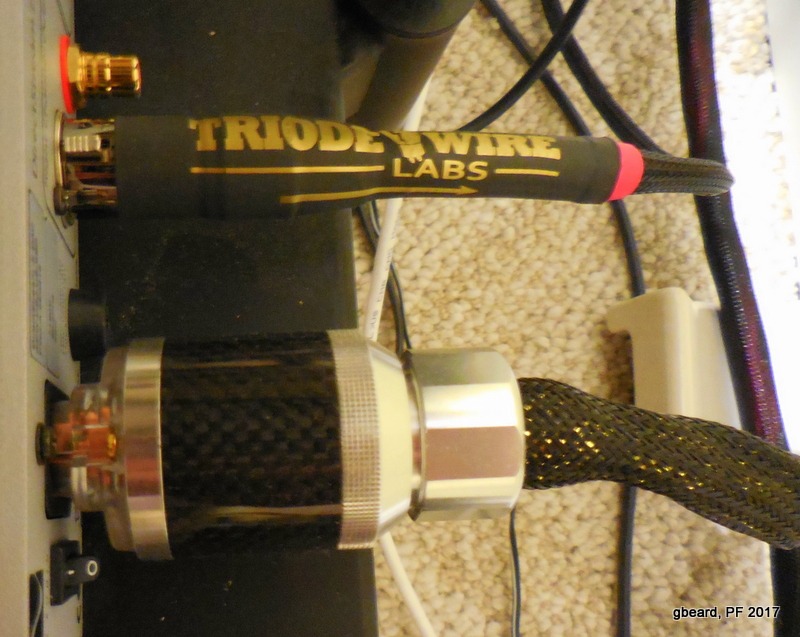
(Pardon the dust, I'm always under construction)
The American Digital power cord lowers the noise floor of the PS Audio DirectStream Junior DAC, adding dimension, clarity and detail. The Obsession PC powering the INT-60, also lowers the noise floor; increasing transparency, gaining width in the stage, deepening bass performance, and adding dynamic oomph. Details that where once lost in the mix, are now a part of the music.
Sonic Integrity
It has been my experience that differences between cables seem minute when compared one-to-one, particularly when swapping back and forth. This finding can change when listening over time, especially as a system. When used together as a loom, the Triode Wire Labs cables seem to provide a compounding effect, and long term listening did nothing but emphasize how much I enjoy them in my audio system.
A few hours after adding both power cords, Roon Audio randomly selected "Monkey Around" from Delbert McClinton's 1997 release, One of the Fortunate Few. It was a dynamic reminder of how great an audio system firing on all cylinders can sound, and I specifically noted my appreciation for the tonal accuracy of the piano. A few songs later came another delightful tune, "The Devil's Paintbrush Road", from The Wailin' Jenny's 2006 record Firecracker. The drum thwack in the opening stanza sounded so real, it actually startled me. I had to drink a whiskey to calm my nerves. Aided by the stable of TWL cables (and a neat snort of Russell's Reserve), my system gelled for the first of many unforgettable listening sessions essential to completing this review. What a hardship to play with these killer cables! After several months of listening—certain of complete break-in for those who believe in such electro-shenanigans—I quit trying to determine "which one is different from the others", and focused solely on listening. This was the gorgeous musical flow I remembered from AXPONA. It is pour yourself a snort of Kentucky's finest and enjoy, musical flow. And enjoying is exactly what I have been doing ever since.
So there you have it: A decidedly unscientific look at Triode Wire Labs audio cables. I found that these wonderful wires have a very favorable effect on the sound of my audio system, and my enjoyment of music. And for those reasons alone, I can't recommend them highly enough for auditioning in your own system.
*(See retail prices shown in USD above. 30 day trial period is available. Some products have optional configurations. See Triode Wire Labs website for additional information.)
Triode Wire Labs, Inc.
PO Box 32
Massapequa Park, NY 11762
1-516-659-6748




